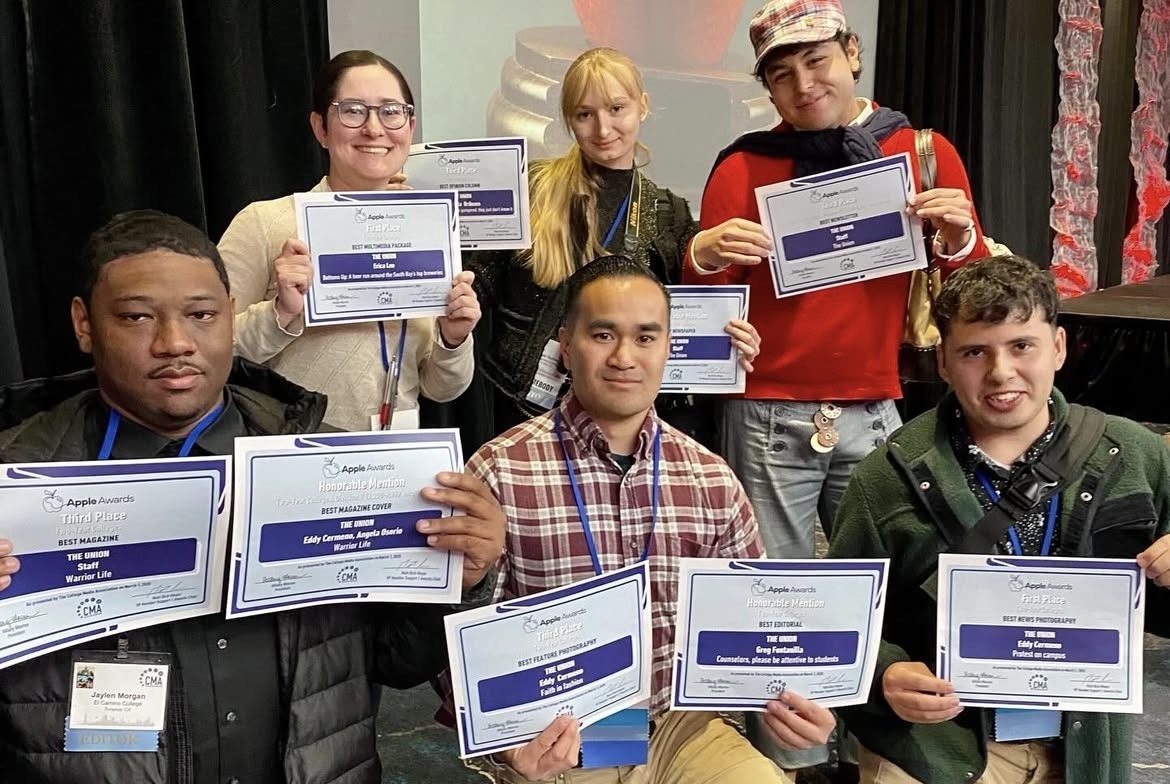Two years ago, three faculty members pitched their idea for a center dedicated to Hispanic students, faculty and staff to El Camino College.
Argelia Andrade, Shane Ochoa, and Xocoyotzin Herrera will see their vision come to life as Mi Casa, which stands for Mexican, Indigenous, Central American and South American, officially opens during the spring semester.
The center will be on the third floor of the Communications Building, above the Social Justice Center, and will consist of seven offices and two classrooms.
“This is historical for [El Camino],” Director of Student Equity and Achievement Nayeli Oliva said.
The faculty members wanted a space for the Hispanic community at El Camino to congregate and mingle.

Shane Ochoa, associate English professor and Puente co-coordinator, said the main concern was a lack of representation on campus. With the inclusion of staff, faculty and students, Hispanics form about 60% of the El Camino population.
“Not having an affinity center for the largest demographic on campus was criminal,” he said.
Mi Casa will be sharing some of their offices with the upcoming MANA and Foster Youth centers.
The MANA program focuses on the success of students of Native Hawaiian or Pacific Islander descent. A similar program, the Puente Project, helps educationally underserved students attend a four-year college.
The Mi Casa committee, which consists of several Puente Project counselors along with faculty members, expects to receive the keys to the center before its soft opening on Oct. 18 from 11 a.m. to 2 p.m. The furnishing and redecorating process will begin from there.
“What’s really important is comunidad. We’re at a community college, so how do we create a community for Latinx students?” Ochoa said.
Puente counselor and co-coordinator Maribel Hernandez said the goal is to get students involved and to represent their heritage at the center.

The center will host a “study hall” where students can drop in, work on assignments, request help and attend a professor’s office hours or talk to a counselor.
There will be guest speakers, open mic sessions, workshops and opportunities for students to present their research, art and music. Career and transfer resources will also be available.
Ochoa hopes the center will be student-led and student-centered, and to evolve as students input their ideas.
Acquiring the space would not have been possible without former Vice President of Student Services Ross Miyashiro.
Once Miyashiro approved the center, Oliva said he was a big help when it came to finding the space and securing funding.
While Student Equity and Achievement will be partially funding the center, some of the funding will also come from SB-85, a California bill that provides funding for equity compliance in education.
“In the future, the goal is to have the institution, the district, pay for that space,” Oliva said.
Ochoa said the center is open to everyone, not just Hispanic students.
“It’s not exclusionary. We want everyone on campus to know that they can come to Mi Casa. For whatever they need,” he said.
Oliva said she’s excited to have the space.
“It means a lot to my department,” she said. “The Mi Casa center that targets the Latino population should’ve happened in my opinion a long time ago, but we’re doing it now, and that’s something very positive.”




![Physics and astronomy professor Susan Stolovy presents astronomical news and updates to attendees at the first planetarium show of the semester at El Camino College on Friday, March 28. Prior to becoming a professor at ECC, Stolovy completed her doctorate in physics and worked as an astrophysicist for NASA and the California Institute of Technology on spacecraft missions. "[I'm] still very tuned into what's going on in the world of research as well, and I hope to bring a little bit of my experience into the classroom," Stolovy said. (Nikki Yunker | The Union)](https://eccunion.com/wp-content/uploads/2025/03/planetarium-Made-with-Clipchamp-3-frame-at-0m28s-1200x675.jpg)















